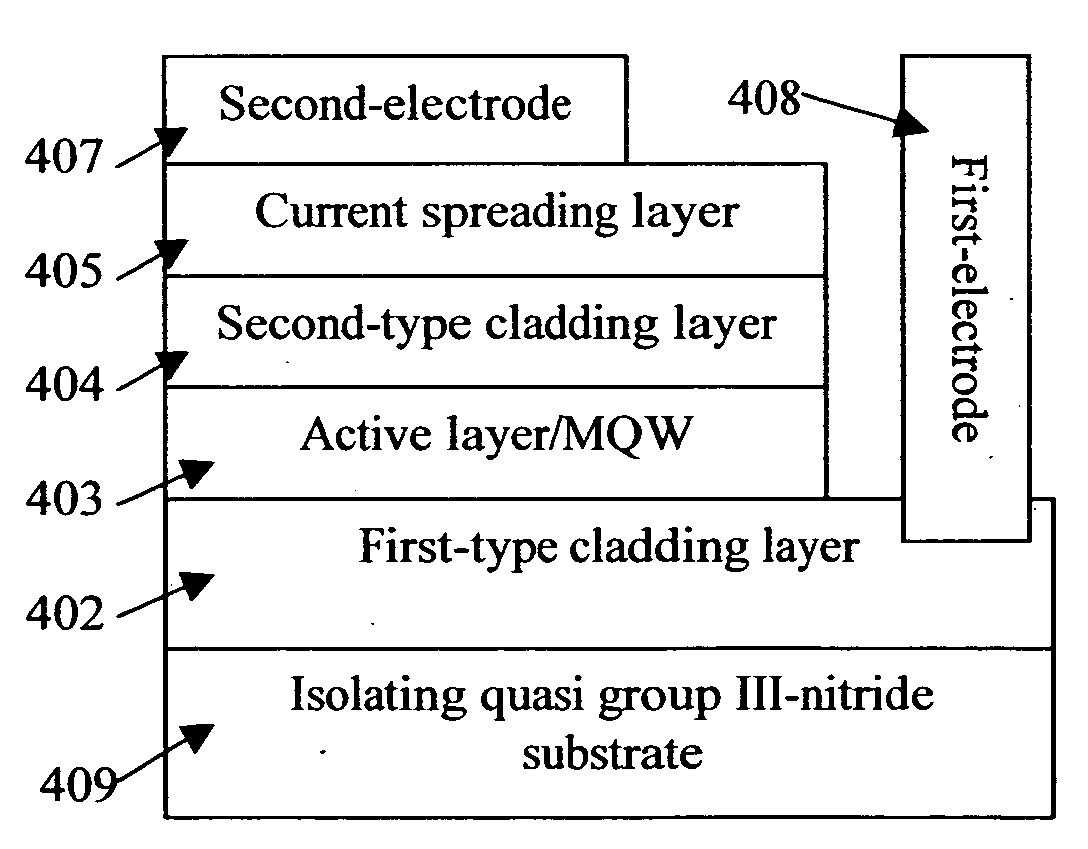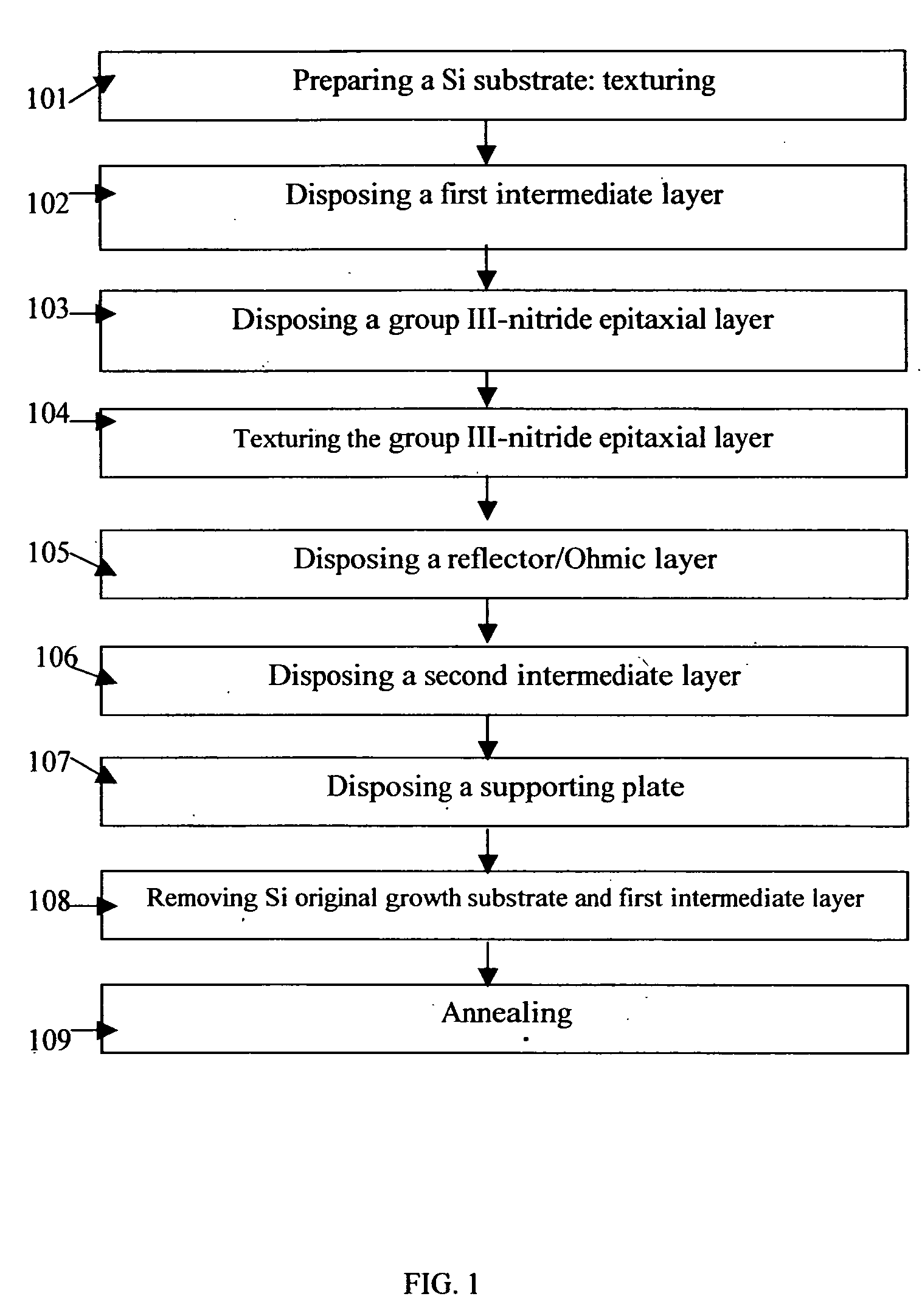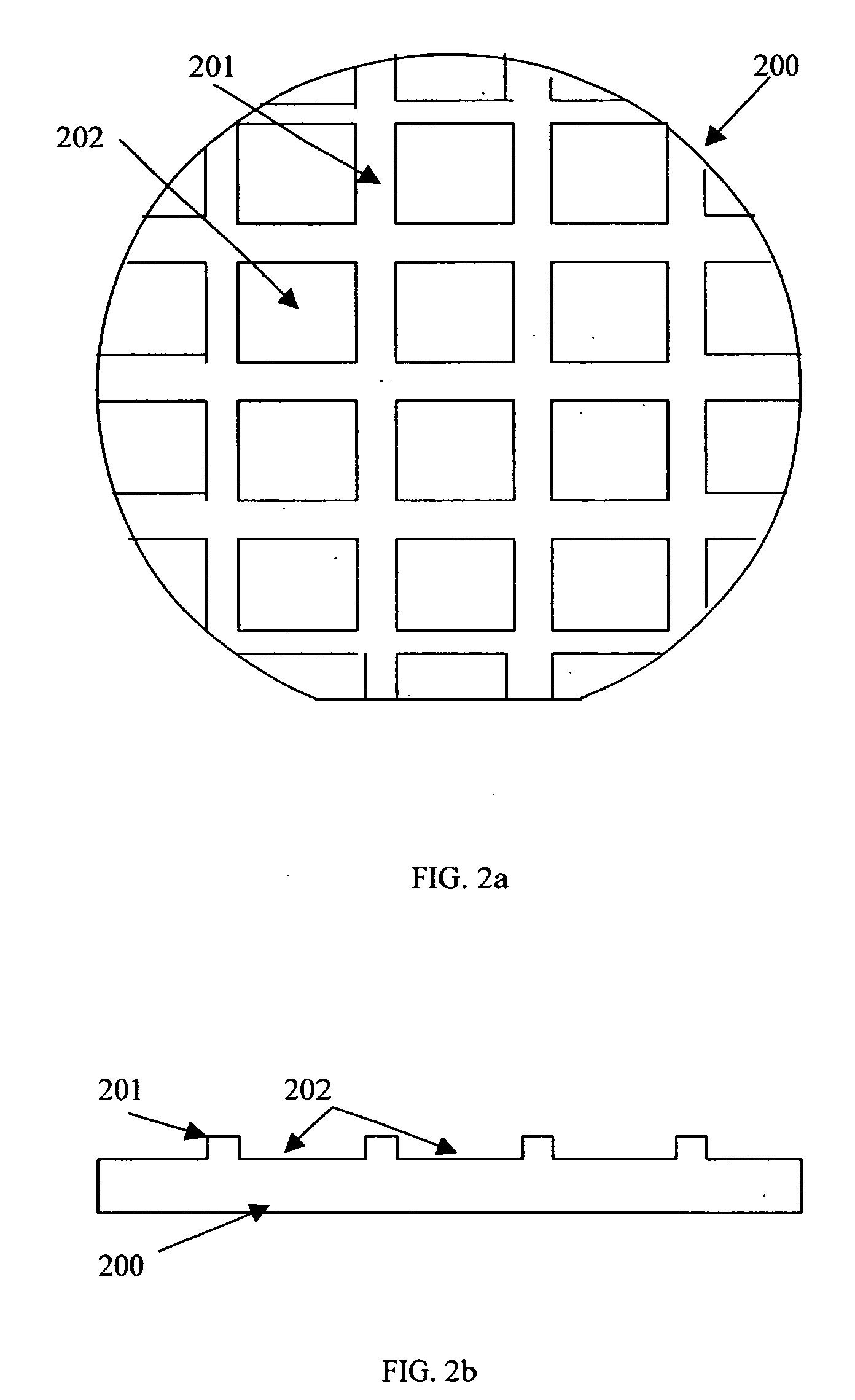Quasi group III-nitride substrates and methods of mass production of the same
- Summary
- Abstract
- Description
- Claims
- Application Information
AI Technical Summary
Benefits of technology
Problems solved by technology
Method used
Image
Examples
first embodiment
[0088] First embodiment of process 102: the first intermediate layer is an AlN layer. Disposing an AlN epitaxial layer on the surface of a Si (111) original growth substrate. The Si original growth substrate is placed in the chamber of MOCVD, at atmospheric pressure, introducing trimethylaluminum (TMA), NH.sub.3, heating up to 1000-1250 degree C., growing an AlN layer of thickness 1-500 nm with a smooth surface.
[0089] Second embodiment of process 102: the first intermediate layer is an AlN / Al layer. Disposing an Al layer of thickness of few monolayers to nanometers on the surface of a Si (111) original growth substrate for preventing the top surface of the Si original growth substrate from nitriding. Then disposing an AlN layer on the Al layer under the same condition as that of the first embodiment of process 102.
third embodiment
[0090] Third embodiment of process 102: nitriding the top surface of an Al layer. Firstly disposing an Al layer on the surface of a Si (111) original growth substrate. Introducing nitrogen source, heating up to 400-700 degree C. for 10-40 minutes, the top surface of the Al layer forms an AlN layer. Wherein the nitrogen sources comprise N.sub.2 and NH.sub.3 / H.sub.2.
fourth embodiment
[0091] Fourth embodiment of process 102: the first intermediate layer is an B.sub.xAl.sub.1-xN layer having compositional graded structure on the surface of a Si(111) original growth substrate: placing the Si original growth substrate in MOCVD, at atmosphere pressure, heat up to 1050-1150 degree C., introducing TMA, triethylboron (TEB), NH.sub.3, disposing B.sub.xAl.sub.1-xN (0≦x<1). Selecting the value of “x” such that the difference of lattice constants between the Si original growth substrate and the BAlN layer is minimized. Then gradually decreasing the flow rate of TEB, increasing the flow rate of TMA, until x=0, i.e., transfer from growing B.sub.xAl.sub.1-xN to grow AlN. The change of value of “x” may be either continuous or discrete.
PUM
 Login to View More
Login to View More Abstract
Description
Claims
Application Information
 Login to View More
Login to View More - R&D
- Intellectual Property
- Life Sciences
- Materials
- Tech Scout
- Unparalleled Data Quality
- Higher Quality Content
- 60% Fewer Hallucinations
Browse by: Latest US Patents, China's latest patents, Technical Efficacy Thesaurus, Application Domain, Technology Topic, Popular Technical Reports.
© 2025 PatSnap. All rights reserved.Legal|Privacy policy|Modern Slavery Act Transparency Statement|Sitemap|About US| Contact US: help@patsnap.com



